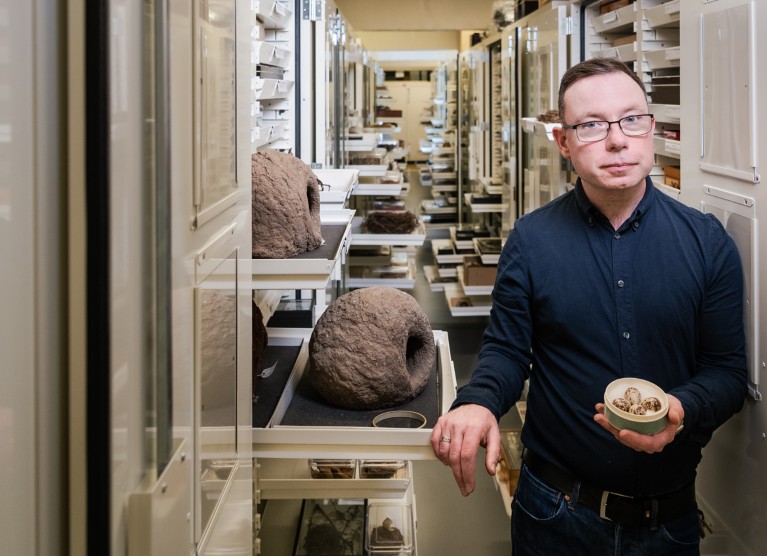Here at the Natural History Museum at Tring, UK, I’m in our nest collection, which numbers just over 4,000. Behind me are 67 metal cabinets with nests arranged in taxonomic order. Each nest is labelled with the date and place of collection, and the collector’s name. Next to me is a 1928 mud nest from Argentina that was made by the rufous hornero (Furnarius rufus), known for its large, globular nests that shield eggs and young from predators.
I’m the senior curator of birds’ eggs and nests. I ensure that specimens are stored appropriately to prevent damage and are well catalogued, so we know exactly what we have and where. Our nest and egg collections are the most comprehensive archive of information on bird breeding in the world. When I came here about 20 years ago, the nest collection was rarely used and we didn’t know how many examples of extinct and endangered species we had. I’ve spent a lot of time and effort cataloguing and understanding these particular 129 nests, 40 of which belong to extinct birds such as the Laysan crake (Zapornia palmeri) and the Aldabra brush warbler (Nesillas aldabrana).
We have up to 300,000 sets of eggs. I am holding four dunlin (Calidris alpina) eggshells, collected in 1952 in Ireland. They were donated to the Wildfowl & Wetlands Trust, a UK conservation charity, which gave them to us as part of a larger collection.
I have been interested in birds and natural history since childhood, and my mother used to take me to the Royal Museum of Scotland (now the National Museum of Scotland) in Edinburgh. After graduating in biological sciences from Edinburgh Napier University, I volunteered at the museum before getting my first paid museum job.
When researchers want to access the collections, I check that we have specimens relevant to their research, discuss exactly what they intend to do and work with them to minimize the risk of damage. Although I want our collections to result in robust science, they must be preserved.


 The bird librarian
The bird librarian
 Sharing space with 34 million dead insects
Sharing space with 34 million dead insects
 To look after these birds is to ‘fall in love’ with them
To look after these birds is to ‘fall in love’ with them








